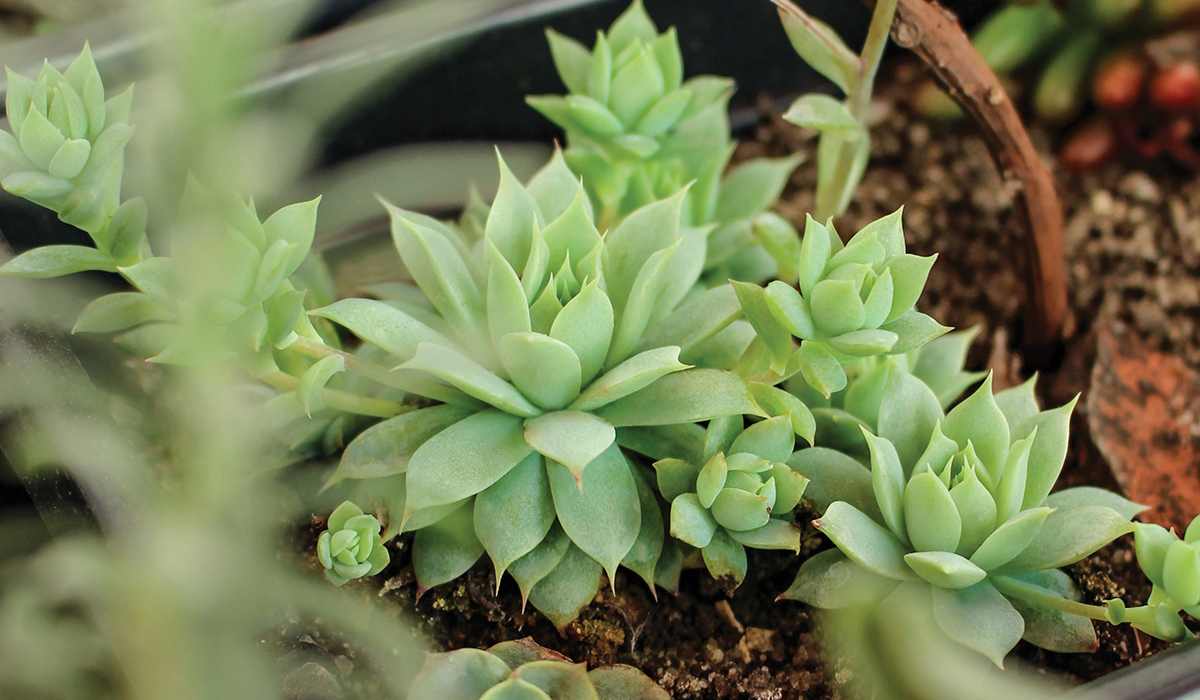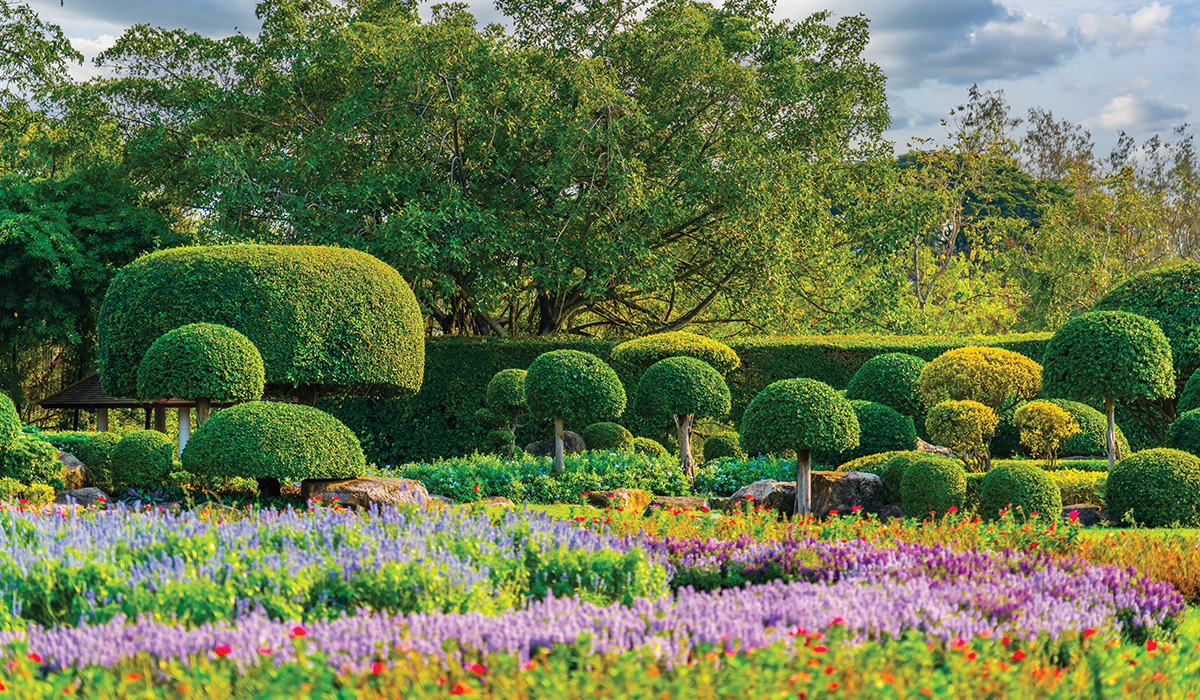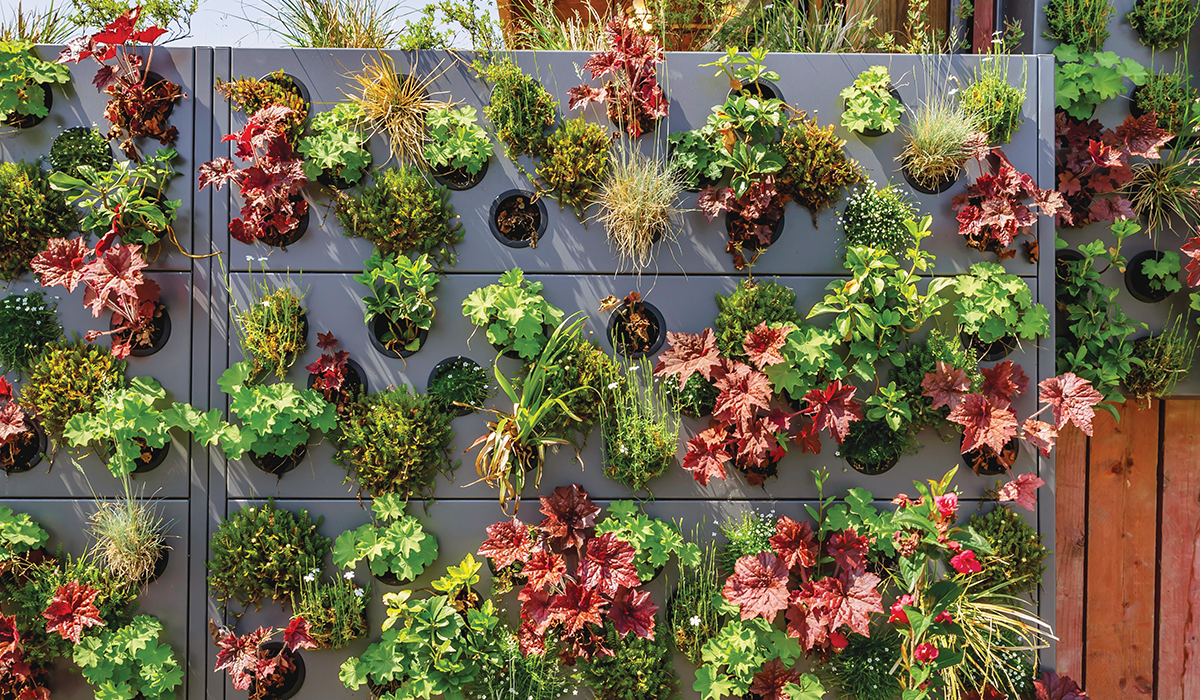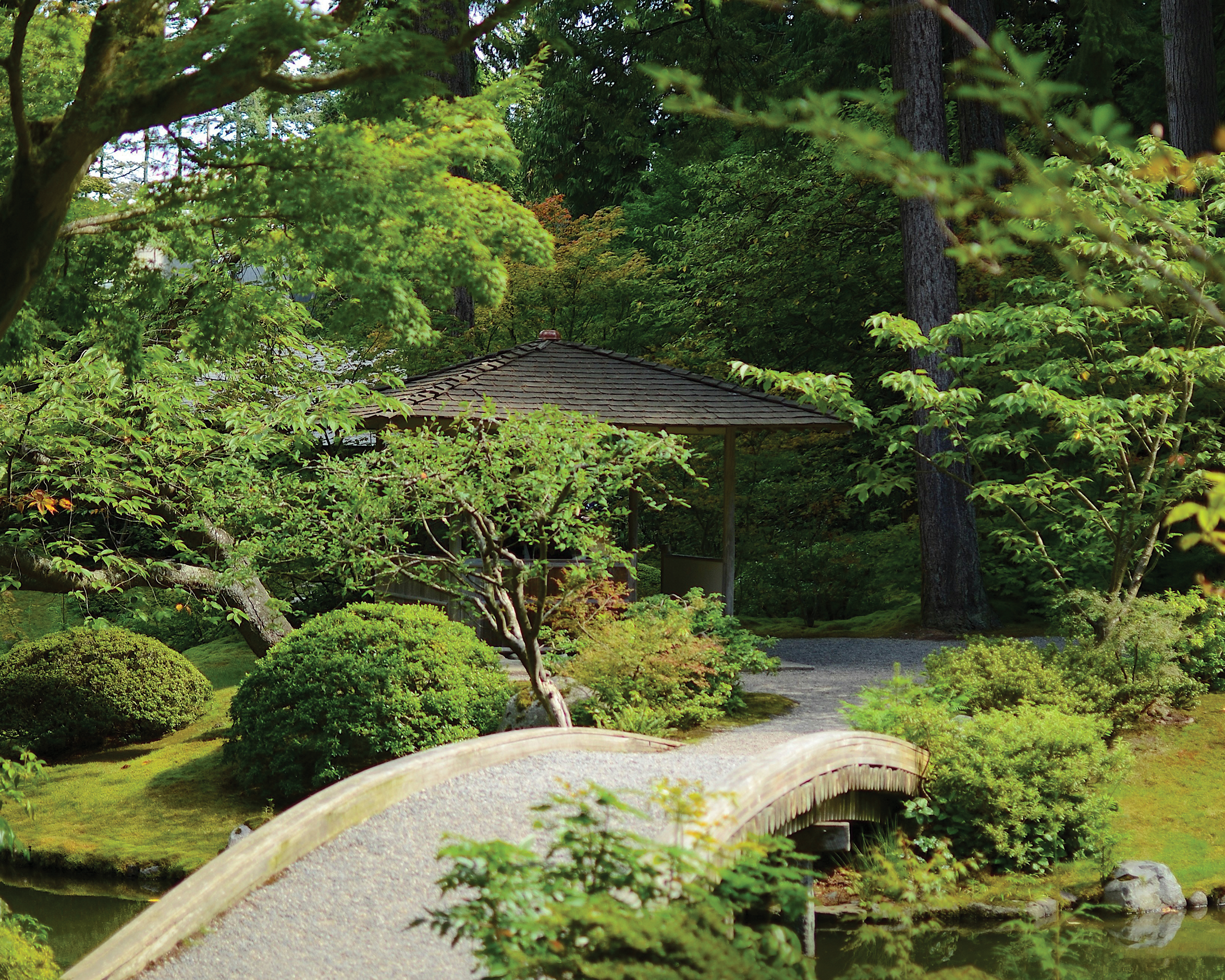From Japanese-inspired zen landscaping to the colourful allure of English gardens, discover how these different garden styles can transform your outdoor space.
Gardens are personal escapes. The beauty of gardening lies in its flexibility — blending ideas, adapting them to your climate or simply borrowing small elements from each one to enrich your own outdoor space. From serene minimalism to flowery abundance, different garden styles offer unique ways to transform your outdoor space. We spoke to esteemed landscape designer Craig de Necker about these different garden styles and how you can include them in your own garden.
Zen garden
The Zen garden, also known as a karesansui garden or a Japanese dry garden, is all about simplicity. Its minimalist layout features gravel or sand raked into patterns that mirror the ripples of water alongside carefully placed rocks to represent mountains or islands. Plants are sparse, often limited to small shrubs, moss or bonsai trees, emphasising a sense of serenity and order.
This ancient yet deeply symbolic garden is designed to create a sense of calm, emulating the essence of nature as a space for meditation. “This type of garden is ideally suited to South African water-wise gardens as it embraces the use of pebbles and rock instead of using thirsty lawns,” says Craig. “Plants are used sparingly, and a paperbark Acacia tree works exceptionally well as a focal point. You can also add a spot light or two under the tree to add a little sizzle to the space.”
Desert oasis garden
A desert oasis garden draws inspiration from arid landscapes to showcase an array of drought-tolerant plants, sculptural forms and unexpected bursts of colour. “If a tropical garden and a desert garden had a child, it would be a desert oasis,” says Craig. “These gardens can be very similar to the Japanese Zen gardens, but less formal and not necessarily as minimalist. Being an oasis means that a palm tree or two will not be out of place (providing a cool, dappled shade), and most palm trees are drought-resistant, which fits well with the desert plants such as cacti and aloes.” This type of garden is particularly popular in regions like the Karoo and parts of the Western Cape, supporting water conservation by using native plants such as succulents, cacti and hardy desert shrubs. Despite its rugged origins, a desert garden doesn’t have to feel barren. It can be richly layered with plants of different heights and textures, interspersed with decorative rocks, bold ceramic pots or even a small water feature to evoke an oasis-like feel. Desert oasis gardens can be integrated into courtyards, pavement designs or back gardens and are ideal for those who want a low-maintenance, water-wise garden without sacrificing visual impact.

English garden
English gardens present a perfectly balanced mix of hardscaping and the subtleties of lush greenery and hedges. To bring this style home, consider planting generously, layering different flowers to create depth and interest throughout the seasons, including features such as ponds, fountains or bird baths to bring in natural reflection and a sense of serenity. “In South Africa, this could include indigenous flowering species such as Agapanthus, Dietes and Tulbaghia as well as grasses such as Aristida junciformis. This style of garden is well-suited to the addition of edible plants such as rosemary, thyme, citrus trees and some chilli plants,” adds Craig. Classic touches such as wooden benches, a flower-laden pergola or a sundial lend an air of old-world romance to invite wandering, lingering as well as endless moments of discovery.

Vertical Garden
The rise of compact, urban living has inspired the popularity of vertical gardens — an ideal solution for small balconies or courtyards, where floor space is at a premium but walls or fences are waiting to be brought to life. Vertical gardens are perfect for South Africa’s urban environments, where space can be tight but sunshine is abundant. A vertical garden doesn’t just add greenery — it brings texture, depth and a range of other benefits to both indoor and outdoor spaces, including air purification and being used as a natural privacy screen, bringing a burst of nature to a space that might otherwise feel sterile or confined. “These gardens can easily accommodate succulents and grasses, which both tend to be water-wise,” says Craig. The key is choosing plants that suit your light conditions and watering schedule to ensure your living wall thrives. If you’re a foodie, including culinary herbs such as basil, oregano and mint could be a deliciously practical way to combine beauty with function.

Words: Shai Rama
Photography: Getty Images, Pexels, Shutterstock, Unsplash
Text courtesy of Livingspace magazine







